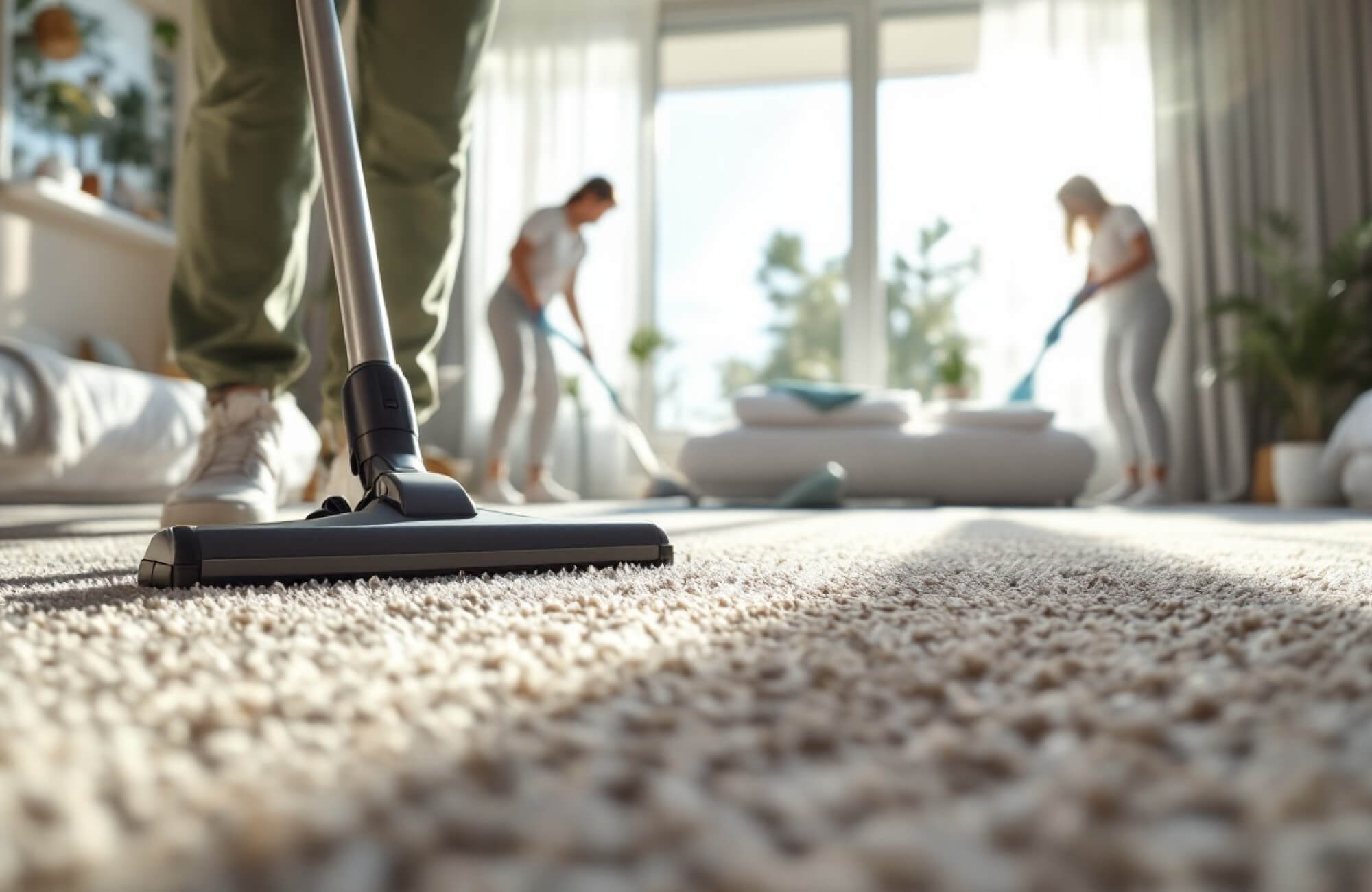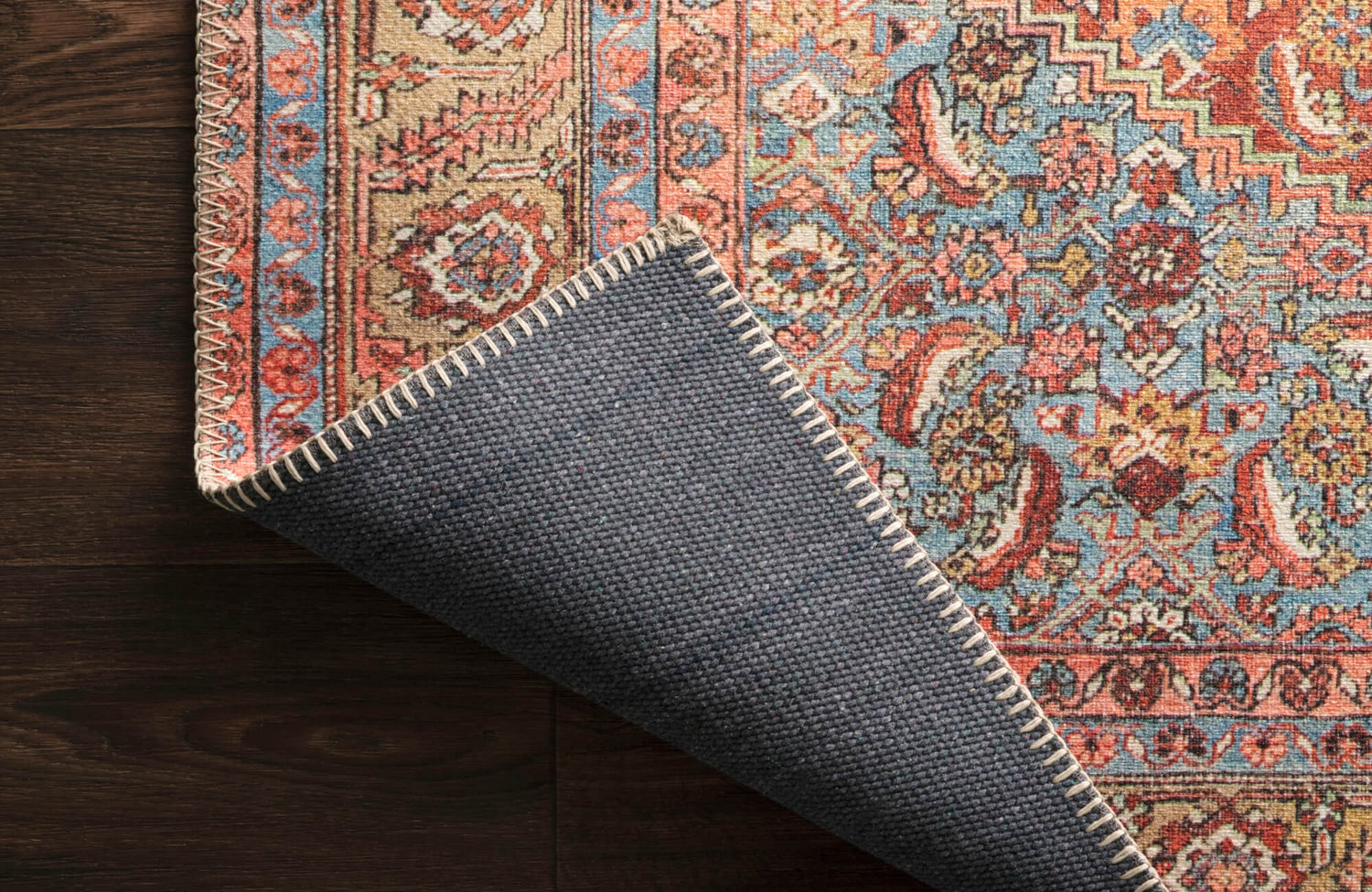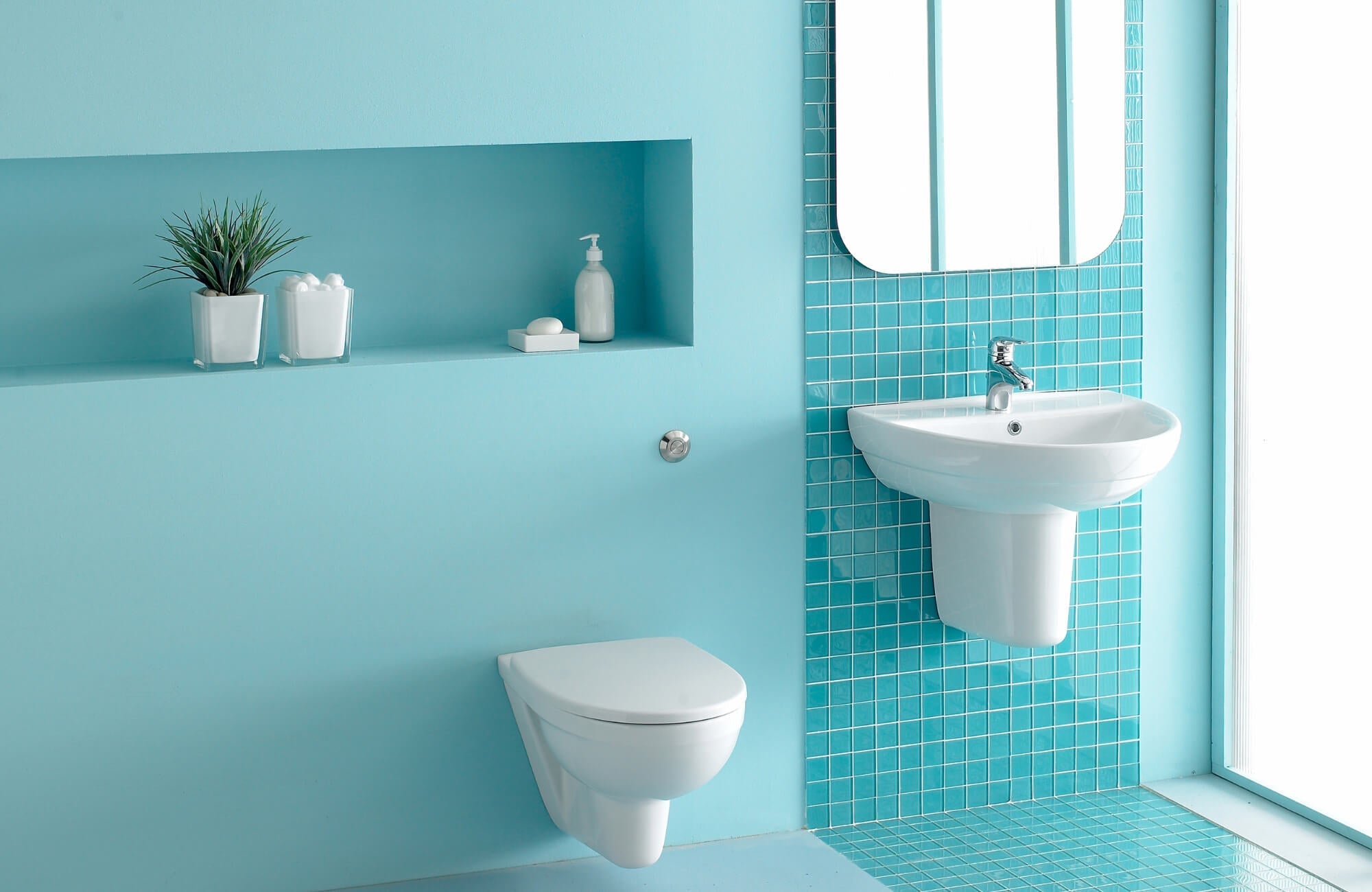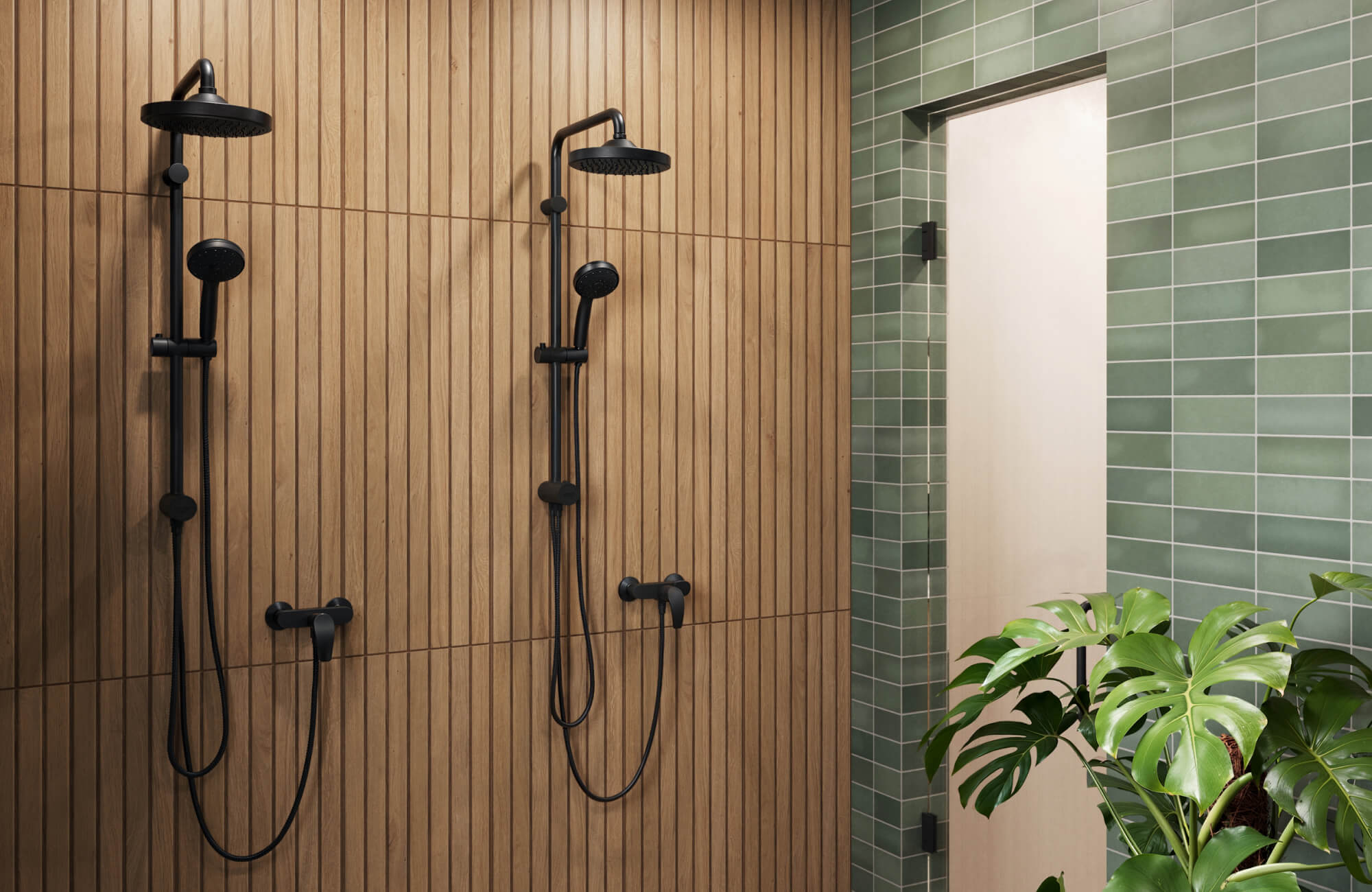Rugs may not always be in use, but that doesn’t mean they should be forgotten. Improper storage can lead to lasting damage like creases, fading, or even mold, especially if rugs are folded, exposed to moisture, or wrapped in the wrong materials. Taking a few preventive steps now will help preserve their beauty and structure until you're ready to use them again.
In this article, we’ll guide you through how to store rugs the right way. From cleaning and rolling to labeling, sealing, and checking periodically, each step plays a role in keeping your rug safe, fresh, and ready for its next use.

Clean the Rug Before Storing
Cleaning your rug before storage may seem like a small detail, but it makes a major difference in preserving its condition over time. Stains, dust, and lingering moisture can cause damage when left untreated, leading to mold, mildew, or even pest problems that spread while your rug is rolled up. A clean rug reduces those risks and helps maintain the fibers, texture, and color so it still looks and feels great when you bring it back out. For instance, even small food particles can attract insects, and moisture tucked away in the fibers can lead to discoloration or odor.
To get your rug storage-ready, start by vacuuming it thoroughly on both sides to lift out dirt and grit. Spot clean any visible stains using gentle, rug-safe solutions—just be sure to test a small area first. For rugs that are delicate, antique, or heavily soiled, professional cleaning may be worth the investment to avoid accidental damage. And whatever method you choose, let the rug dry fully before wrapping or rolling. Even a trace of dampness can create long-term issues once the rug is sealed up for months at a time.

Roll, Don’t Fold
When it comes to rug storage, how you pack it away can make or break its long-term condition. Folding might seem convenient, but it often leads to permanent creases or structural damage. Rolling is typically the safer choice, especially for preserving the rug’s shape, texture, and backing. With the right technique, you can avoid unnecessary stress on the fibers and make sure your rug is ready to use again with minimal effort.
The Risks of Folding
Folding a rug can seem like a quick way to store it, but those folds often create sharp creases that are hard to remove, especially in rugs with thicker piles or stiffer backings. These stress points can weaken the material over time and may leave visible lines or unevenness even after the rug is unrolled. In some cases, repeated folding and stacking can lead to cracked backing or fiber separation, which compromises the structure and overall look of the rug.
It’s especially risky to fold natural fiber rugs or pieces with latex backing, as they tend to be less flexible and more prone to breakage. Even lighter synthetic rugs can suffer damage if weight is applied to a fold for too long. For that reason, rolling is usually the preferred method across most rug types. It maintains an even distribution of pressure and helps the rug hold its original shape.
Proper Rolling Technique
Rolling your rug with care is simple but important. Start by turning the rug pile-side in, which protects the visible surface and helps maintain its softness and color. Make sure the roll is snug but not too tight, forcing it can strain the fibers or distort the edges. Use twill tape, cotton string, or another breathable tie to gently secure the roll so it holds shape during storage.
Before you roll, smooth out the surface to avoid trapping wrinkles or debris inside. If your rug has a natural curl or edge lift, consider rolling from the opposite end to help counteract it. For added protection, especially during long-term storage, wrap the rolled rug in a breathable material like muslin or a cotton sheet. This extra step helps shield it from dust and light without risking trapped moisture.
When Rolling May Not Be Ideal
Although rolling is usually the safest method, there are a few exceptions. Some antique or stiff-backed rugs aren’t flexible enough to roll safely without causing damage, especially if the material has aged or dried out. In these cases, improper rolling could lead to cracks or fiber splits that aren’t easily repaired. It's best to consult a professional if you're unsure how to handle rare or valuable pieces.
Rugs with detailed embroidery, fragile edges, or unique construction may also require special handling before storage. Instead of forcing a roll, you might need a custom wrap or archival-grade materials designed for preservation. A quick conversation with a rug cleaning or restoration expert can clarify the best approach for your specific rug. Taking that extra step can protect your investment and prevent costly repairs later.

Use a Protective Cover
Even after rolling your rug correctly, how you wrap and protect it plays a big role in how well it holds up over time. A proper cover prevents dust buildup, reduces exposure to light, and helps maintain the rug’s shape and texture. It also adds a layer of defense against accidental scuffs or scratches while in storage. Choosing the right wrapping materials and knowing which ones to avoid can go a long way toward keeping your rug in excellent condition.
What Materials to Use
The best materials for wrapping stored rugs are breathable and gentle on fabric. Cotton sheets, muslin, or brown craft paper are excellent choices—they allow airflow, which helps regulate moisture and prevent mildew. These coverings are soft enough to avoid scratching delicate fibers but still provide a physical barrier against dust or pests. You can usually reuse them, too, which is helpful if you plan to rotate your stored rugs throughout the year.
For long-term storage, especially in areas where humidity may fluctuate, wrapping with an additional layer of acid-free paper can provide even more protection. This step is especially useful for antique or natural fiber rugs that are more sensitive to environmental changes. Just make sure the material fits loosely rather than tightly to avoid pressure marks. A breathable cover keeps your rug safe without sealing in unwanted moisture.
What to Avoid
Plastic may seem like a convenient solution, but it's one of the worst materials you can use to wrap a rug. It traps moisture, which creates the perfect environment for mildew and mold to grow, especially in humid or non-climate-controlled spaces. Over time, this can lead to musty odors, fabric deterioration, or even discoloration. Even tightly sealed plastic bins can cause similar issues if the rug can’t breathe.
Also, avoid synthetic materials that don’t allow for air circulation, such as tarps or vinyl sheeting. These might protect from dust, but do more harm than good by locking in humidity. If you're worried about water damage in your storage area, focus on keeping the rug elevated and the space ventilated rather than sealing it up. A breathable wrap paired with smart storage placement offers better protection overall.
Label Your Rug Before Wrapping
If you’re storing more than one rug, or if you plan to keep a rug in storage for a long period, adding a label can save you time and frustration later. A fabric-safe label or tie-on tag helps you quickly identify which rug is which without having to unwrap them all. This is especially useful for larger collections, seasonal rotations, or coordinating rugs by room or purpose.
Make sure the label is attached securely but gently, and avoid using adhesive tape directly on the rug or cover, as it can leave residue or damage the fibers. You might also include a few details on the tag, such as the rug’s dimensions, origin, or last cleaning date. It’s a small step that adds organization to your storage system and helps you keep better track of your collection over time.

Store in a Cool, Dry, Elevated Place
Where you store your rug matters just as much as how you prepare it. Even a well-wrapped rug can suffer if it’s kept in a damp or unstable environment. Temperature shifts, moisture exposure, and poor ventilation can all lead to damage like mold, fading, or fiber weakening. A stable, elevated, and dry location helps preserve your rug’s quality for the long haul, whether it’s in storage for a season or several years.
Ideal Storage Conditions
The best environment for rug storage is one that mimics the conditions of a lived-in room—cool, dry, and relatively stable year-round. Spaces like closets, spare rooms, or under-bed storage in temperature-controlled homes are much safer than basements or attics, which are prone to high humidity and heat. These fluctuating conditions can encourage mold, mildew, and even fiber shrinkage, especially in natural or antique rugs.
For added peace of mind, consider using a small dehumidifier in the storage area if the climate tends to be damp. Also, avoid placing rugs near vents or windows, which could expose them to uneven heat or UV rays. A well-chosen storage space not only protects the rug’s appearance but also ensures the fibers and backing remain strong over time.
Keep Rugs Off the Ground
Even if your floor seems dry, keeping a stored rug directly on it invites moisture problems, especially on concrete or basement floors where condensation can build up unseen. Elevating your rug with shelves, wooden pallets, or even slatted racks helps prevent unwanted contact with damp surfaces. This simple step allows air to circulate and reduces the chance of long-term water damage.
For best results, choose storage platforms made from unfinished wood or coated metal that won’t transfer chemicals or color to the rug. You can also line the surface with a breathable fabric to add an extra buffer layer. Keeping your rug off the ground may seem like a small move, but it plays a big part in preventing mold and preserving its texture and shape.
Avoid Heavy Stacking or Compression
Once your rug is wrapped and stored, it might seem harmless to place other items on top, but even moderate pressure can affect its structure over time. Stacking heavy boxes, furniture, or other rugs can compress the fibers and create lasting dents or uneven spots, especially on plush or high-pile styles. For rolled rugs, added weight can also cause the core to flatten or bend, leading to warping that's tough to reverse once unrolled.
If possible, store your rug on its own to eliminate these risks. Keeping it on an open shelf or in a clear space ensures it maintains its shape without external pressure. If space is limited and stacking can't be avoided, make sure only lightweight, soft items—such as pillows or empty bins—are placed on top. Also, check periodically to confirm that nothing has shifted or added unnecessary weight. These small precautions go a long way in preserving both the look and structure of your rug during its time in storage.

Know Which Rugs Require Special Storage
While many rugs can be safely stored with general precautions, certain materials call for extra care. Rugs made from antique textiles, silk, or natural fibers often react more sensitively to light, moisture, or improper wrapping. Knowing what type of rug you're storing helps you apply the right level of protection and avoid accidental damage during long-term storage.
Antique & Silk Rugs
Antique and silk rugs are particularly delicate, both in material and construction. These pieces often hold not just aesthetic value but also sentimental or monetary worth, making it critical to handle them with extra caution. For example, silk fibers can degrade quickly in humid or overly dry conditions, so a climate-controlled space is usually best. It's also worth investing in acid-free tissue or professional-grade wrapping to prevent discoloration or fiber weakening over time.
Because of their fragility, these rugs are often better off with professional preparation and storage. A rug specialist can wrap and pack them properly, ensuring the fibers aren’t overstressed or compressed. If you’re unsure, it’s safer to consult someone with experience in preserving heirloom textiles rather than risk irreversible damage.
Natural Fiber Rugs
Rugs made from jute, sisal, or other plant-based fibers bring great texture to a space, but they also absorb moisture more easily than synthetic or wool options, such as our Sweeney Wool Pile Rug in Graphite above. This makes them more vulnerable to mold, mildew, or warping when stored in humid environments like basements or enclosed sheds. Even brief exposure to damp conditions can result in fiber expansion or permanent staining.
To protect these natural materials, always store them in a dry, well-ventilated area. Avoid wrapping them in plastic, which traps moisture, and instead go for breathable fabric covers. It’s also a good idea to check them more frequently during storage, as these types of rugs are more prone to subtle changes that can worsen over time if unnoticed.

Check Periodically
Even when stored properly, rugs benefit from occasional check-ins. Time, temperature, and environment can all impact the condition of your rug, especially in long-term storage. Regular inspections help catch issues early, whether it’s a musty smell, creeping moisture, or an unnoticed crease beginning to settle in.
Routine Maintenance Tips
Set a reminder to inspect your stored rug every few months. Look for signs of mold, mildew, or any insect activity, especially around edges and corners. Gently unroll and re-roll the rug to prevent fiber stress from forming in the same place over time. Doing this also gives you a chance to brush off dust or address any emerging issues while they’re still minor.
Consistent maintenance helps prevent small problems from turning into costly repairs. It’s also a good time to refresh your storage area; wipe down shelves, adjust humidity if needed, or make space for better airflow. A quick check-in goes a long way in protecting your rug’s color, texture, and shape for the long haul.
Reposition If Needed
If your rug has been rolled and stored in the same direction for too long, it can develop pressure lines or uneven compression. Unrolling it carefully and then rerolling in the opposite direction helps distribute that pressure and avoids permanent stress marks. This is especially helpful for heavier rugs or those with thicker piles that hold memory longer.
You don’t need to do this often; just once or twice a year can make a noticeable difference. While unrolling, check for anything unusual in the fibers or backing. It’s also a chance to gently shake out any settled dust before wrapping it back up again. These little adjustments help preserve the rug’s overall structure and softness.
What to Watch For During Inspections
Keep your eyes (and nose) open for early warning signs. Musty odors often signal trapped moisture, while any fading, stiffness, or dark spots could point to mold or mildew. Also, check for frayed edges, insect residue, or uneven coloration that might have gone unnoticed during storage.
Catching these early gives you more time to act, whether it’s treating a stain, increasing ventilation, or seeking help from a rug care professional. A quick inspection doesn’t take much effort, but it can be the key to saving a rug from long-term damage or unexpected surprises later on.
Protect Your Rugs With Smart Storage Choices
Taking the time to store your rugs properly isn’t just about keeping them clean; it’s about preserving their texture, structure, and style for years to come. Whether you're packing away a seasonal accent rug or a cherished antique, each step, from cleaning and rolling to choosing the right storage space, adds up to long-term protection. Skipping these steps may not show immediate consequences, but over time, they can lead to irreversible damage.
If you’re unsure how to care for a specific rug type or need help finding the best material for your space, we’re here to help. Our design consultation service can guide you through both styling and care questions, ensuring your rug isn’t just stored well, but also suits your home beautifully when in use. Let us help you choose, care for, and preserve rugs that last.








